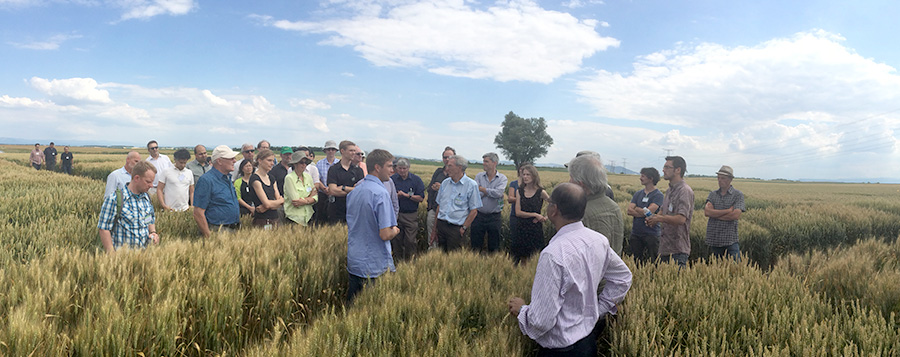Wheat Team Paper on Yields and Climate Change
Feb 12, 2015
By: Jenna Famular
A recent paper in Nature of Climate Change, “Rising temperatures reduce global wheat production” Asseng et al., discusses the systematic testing of wheat crop models, utilized by the Agricultural Model Intercomparison and Improvement Project (AgMIP), against field experiments. The testing was conducted because simulations have a large amount of uncertainty in yield projections due to changes in temperature. Results showed that crop models were accurate between 15 and 20 degrees Celsius, but above 22 degrees Celsius, the uncertainty in the model increased. Wheat appears to be less affected by average temperature and more affected by fluctuations in seasonality, illustrating that the timing of warmer and cooler weather in the growing season has a large impact on grain yield.

Warmer temperatures earlier in the season result in quicker plant maturity and decreasing yields. According to Asseng et al., uncertainty in the models increases with increasing temperature, though many models are accurate in predicting yield declines with higher temperature. Some uncertainty in the models could be caused by lack of data regarding input information. Using an individual model to produce projections also resulted in larger uncertainty than using several models. Using a multi-model average can produce projections with less uncertainty, as a lack of input information on one model has little impact on a multi-model average.
Increasing temperatures are associated with changes in water stress, as higher temperatures cause more water to be lost. By irrigating crops and providing fertilizer, stress on the crop is much reduced and yield can be improved. However, if the crop is exposed to warmer temperatures late in the season, grain yield will be less. Models often project this occurrence accurately which may minimize the impact of other errors in the model. The models project decreases in yield between 1% and 28% for a 2 degree increase in temperature and 6% to 55% for a 4 degree increase in temperature. These projections vary by location, with the largest decreases occurring in low latitudes where the base temperature is already approaching critical temperature for wheat crops. Year to year variability in the models is high, as warmer years have lower yields than cooler years.
Overall the models project decreasing yields with increasing temperature, mostly due to a shorter growing season. In locations where crop growth is limited by water and nitrogen, the models project that temperature increases can result in increased yield due to decreased stress at the end of the growing season; however, other experiments suggest decreased yields irrespective of water supply. The experiments suggest that simulated projections are applicable to most systems that are not irrigated and do not receive high rainfall. By extrapolating the model globally, it is projected that every one degree increase in temperature will result in an average 6% decrease in global wheat production.
For the complete paper click here to access the Nature of Climate Change webpage.
